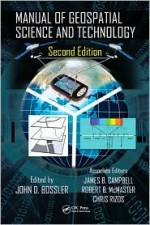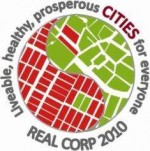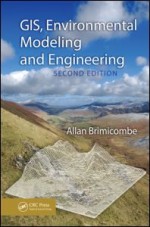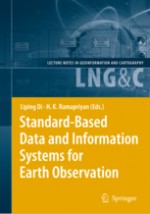
Sunday, May 30th, 2010
Geospatial professionals and users of related products, services and geodata often use a wide variety of technologies and apply spatial knowledge in numerous applications. To do this effectively requires an understanding of these technologies and how they can be used. The Manual of Geospatial Science and Technology includes a wealth of information, providing both technical

Thursday, May 27th, 2010
The protection of nature environments aims to support sustainability. Thematic cartography plays an important role toward achieving this goal. Several surveying technologies are included for the production of this information and the geo-referencing of cultural sites.

Sunday, May 23rd, 2010
Real Corp 2010 opened in Vienna, Austria last week at the Messe Vienna under the theme Cities for Everyone: Liveable, Healthy, ProsperousPromising Vision or Unrealistic Fantasy? With 500 urban planners, transport, design an sustainable planning individuals in attendance, the presentations covered a wide variety of topics ranging from technologies to social planning issues and environmental

Sunday, May 16th, 2010
Ocean Globe examines bathymetry as it is practised and used within the the world’s oceans. The data gathered, produced and used often relies upon geographic information systems (GIS) and other technologies. Seafloor mapping and bathymetry are discussed through both historical and current work as presented by historians, oceanographers and explorers of the ocean. Topics include

Monday, May 3rd, 2010
Geographic Information Systems (GIS) link environmental modelling and engineering technologies and applications together. They allow simulation of scientific phenomena to take place and also enable verification and validation of spatial data modelling. This book describes the connection between GIS and environmental modelling and includes many examples that help readers to understand this relation.

Sunday, April 25th, 2010
Two major challenges that users presently face in the mapping industry are the handling of mass data and the creation of really true orthophotos. Large amounts of data are produced using e.g. laser scanners, image matching, TIN creation, etc. but it is not always successfully managed. The uSMART Mass Data Module (MDM) is however capable

Sunday, April 25th, 2010
The development of standards based systems support the processing, archiving, management and distribution of spatial data. These benefits are particularly important in the field of earth observation which involves the capture of data from hundreds of different types of sensors and thousands of different distribution products. Editors Liping Di and H.K. Ramapriyan provide a collection

Friday, April 16th, 2010
In the 1990’s a novel conceptual computing approach was introduced by Ian Foster: “Grid computing has emerged as an important new field, distinguished from conventional distributed computing by its focus on large-scale resource sharing, innovative applications, and, in some cases, high-performance orientation.”. Over the course of the last few years, researchers have been working hard
Monday, April 12th, 2010
Building design alone does not make a building intelligent. The performance of a building over time, throughout it’s lifecycle is a distinguishing factor in establishing the level of intelligence for a building. Several separate and inter-connected pieces of automated technology are included within intelligent buildings and these must be integrated to provide optimal performance. Author

Sunday, April 11th, 2010
Science, industry and administration require web-based geoinformation concerning storage, availability and processing. This trend will continue in the future as the available amount of spatial data sets increases. This is due to the availability of more detailed data acquisition techniques and improvements regarding Web technologies. Data is collected through airborne laser scanning, detailed models in